
The New Ferry-Line Proposal for Berkeley Marina, Part 2
In 1927, the Golden Gate Ferry Company built a three-and-a-half-mile-long pier at the base of University Avenue, in Berkeley. The small university town had absorbed thousands of refugees after the1906 Great San Francisco Earthquake. By 1936 — just over a year before the Bay Bridge and Golden Gate opened — some 50,000 people ferried across the Bay daily, according to KQED. “There was a rebirth of ferries in the 1970s, during the oil crisis, and again in the early 1990s after the 1989 Loma Prieta earthquake. But after that, ferries sort of stumbled along.”
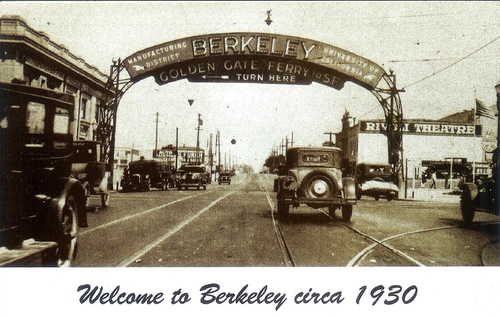
In 2009, a new ferry in Berkeley seemed all but inevitable. “Berkeley is moving full-steam ahead with plans for a new ferry terminal, despite howls from windsurfers and environmentalists that the ferries will bring the marina more harm than good,” SF Gate wrote in December 2009. Berkeley’s city council had approved plans for a waterfront terminal south of the then-open Berkeley Pier. Two ferries running during commuting hours were expected to bring 1,700 people a day to San Francisco. A former councilmember said that the ferry system would be one of the spines of the transportation system, adding, “When, not if, the Hayward Fault lets loose, this will be an ideal way to get people around the Bay.”
But the project was “all but abandoned in 2013 over concerns about dredging, funding and conflicts with other uses for the Marina,” Bay Crossings reported. While Berkeley’s situation is unique, the discussion of the pros and cons of a ferry line will continue around the Bay as ferry service grows in (pre-pandemic) popularity and public investment, and the Bay’s largest public-ferry commuter line — the Water Emergency Transportation Authority, or WETA — has a vision that “ferries run every 15 minutes in the highest-volume locations, and that commuting by ferry is the first-choice travel option for thousands more Bay Area residents every day.”
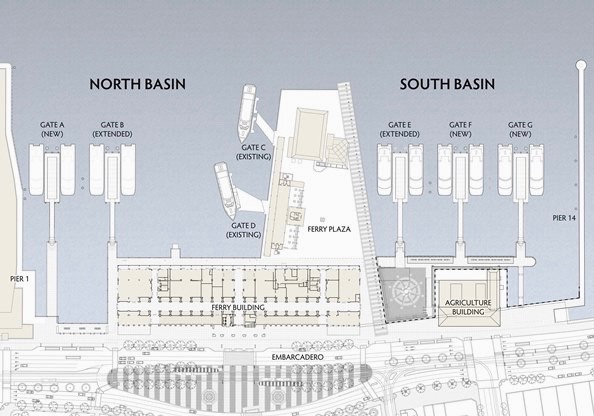
As we reported on Monday, the Berkeley ferry project has been revived, due in no small part to the city’s need to “reopen the pier for public recreation in the most cost-effective manner,” according to Scott Ferris, the Director of Parks, Recreation and Waterfront. (The new pier is described as “dual-ferry-and-recreation use;” the former pier was super-popular with fishermen and walkers.) The ferry will soon be discussed in a yearlong public-engagement process. “The City’s Local Hazard Mitigation Plan has identified developing a partnership with ferry service as a high-priority action that would play an important role in the city’s emergency response and recovery after a major disaster,” Ferris added.
In 2019, when the WETA board of directors voted four to one to pursue the Berkeley ferry, the dissenting vote argued that the proposed Marina terminal was not in accord with WETA’s objective of building near residential and commercial centers, according to Bay Crossings. “The problem with this site is it is virtually impossible to develop housing or commercial space within walking distance,” now-former board member Nick Josefowitz argued.
So, how many people plan to ride a Berkeley/San Francisco boat? What commuter needs on both ends of the Berkeley line will be fulfilled? Given that one of WETA’s goals is to relieve congestion on Bay Area highways, how many vehicles are expected to be removed from the daily commute?
Ferris cited the WETA ridership statistics. “The 2035 projected daily ridership for the Berkeley service is 1,589 (795 unique individuals). Annual ridership on the Berkeley ferry is projected to be just over 203,000 in the first year and increase by 1.78% annually.” Some sources have told us they believe that ferry-ridership demands have been traditionally overestimated, since Berkeley has two stops along the BART line and is close to the Bay Bridge, and because the Marina is well removed from the rest of the city.
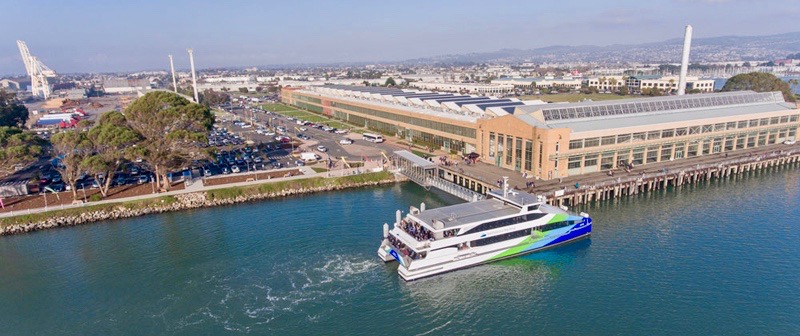
In 2009, a public comment submitted to the WETA board of directors read, “It is critical that accurate and consistent figures are used for both economic and environmental impact planning, and that decision-makers and all communities be fully informed of the financial consequences if actual ridership does not meet projections.” Even though WETA now has access to more cash via a recent bond measure, transparency will be key in creating compromises.
Location, Location, Location. And Dredging.
Recent designs in a recent City of Berkeley report show two options for a terminal on the south side of the University Avenue pier, a small swath of water currently used by windsurfers, kayakers and swimmers. We have heard suggestions for putting the terminal on the north side of the pier to avoid cutting into those waters — an option that will surely be floated during the engagement process.
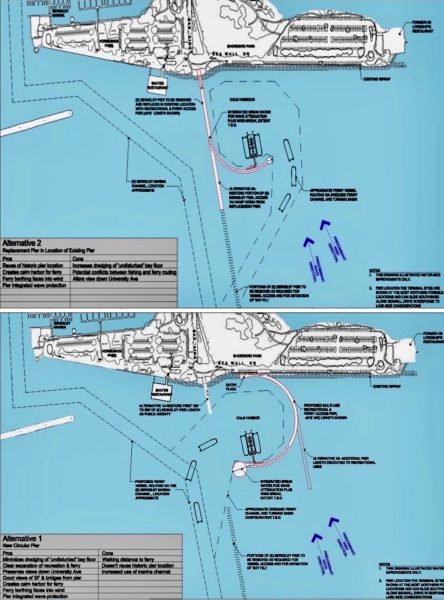
As mentioned, one of the concerns with the 2009 proposal was additional dredging of a second channel angling from the main marina thoroughfare. Is there a potential combined benefit to having ferries use and actively dredge the existing channel, with the Marina entrance “thrown in” as part of the deal? A recent comment from a former Berkeley Marina slipholder told us, “With just a 6-ft draft, we would run aground in the [Marina] entrance at low water.”
“Dredging options will be a part of the public process,” Ferris told us.
(Could the new ferry terminal be built inside the Marina? “The City and WETA are specifically looking at the feasibility of building the ferry terminal as part of a joint project to reconstruct the Berkeley Municipal Pier,” Ferris said. “Neither the City nor WETA are currently considering the construction of a new ferry terminal inside the Berkeley Marina.”)
Where Do You Put all Those Cars?
During the 2009 Berkeley ferry proposal, a source told us that WETA wanted 400 dedicated parking spaces at the Marina — a substantial chunk of real estate. Skeptics of the ferry say that because the Marina is almost entirely funded by berthers and marina businesses, parking should be prioritized for those uses, and should not have to compete with a ferry.
Scott Ferris told us that parking reduction strategies will be considered to reduce the number of cars used by ferry commuters. “Additional parking spaces may need to be created in the Marina to accommodate the parking needs from the ferry services,” he said.
“There are ways to run a ferry service without massive amounts of parking, but so far these suggestions have not had any traction,” wrote Paul Kamen, who serves on the Berkeley Parks and Waterfront Commission. “For example, coordinate the ferry schedule with a shuttle bus from campus up and down University Ave, and set up the terminal so the only way to get on the ferry is by getting off the bus. All walk-ins at the ferry terminal could then be assumed to have parked in the marina for the day and would be charged an appropriately steep parking fee.”
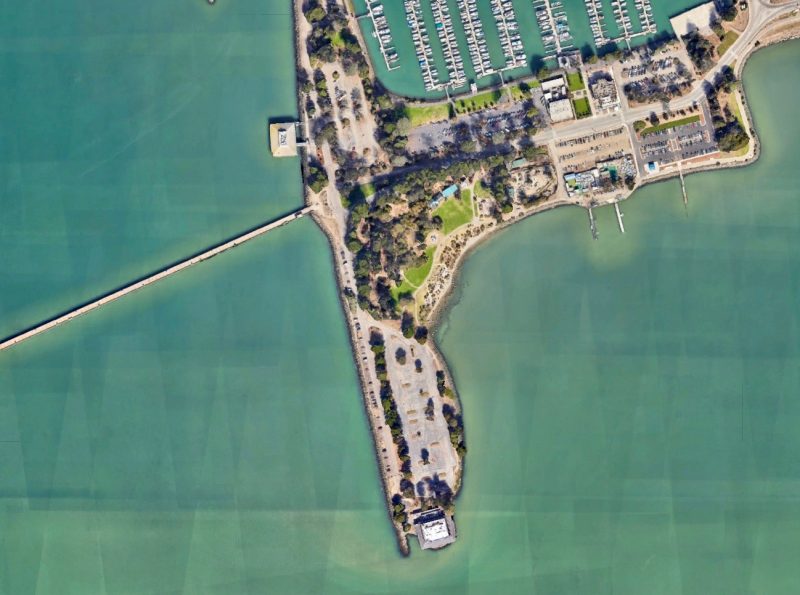
Where do you put all those cars currently on the road if there aren’t more transportation options in the future? The Bay Area’s Regional Transportation Plan predicts a 21% increase in the number of personal vehicles per household, or an addition of 1.1 million cars over the next 20 years. That’s 55,000 cars a year. Can any of us imagine traffic getting worse than it already is?
At some point, cities, counties, states and nations will need to have an honest conversation about the sustainability of their populations. In 2017, transportation represented 60% of California’s carbon dioxide emissions. Whatever transportation solutions cities come up with, they need to be leaner and greener, and compete with finite space on the roads.
Let’s Forget About Ferries for a Flash …
After we wrote about the improvements in the South Basin a few weeks ago, two former slipholders wrote us about the condition of the docks. Berther or slip fees used to make up half of the Marina’s budget; that number has fallen as boats have left.
This spring, the Marina will see the initial phases of a $20 million investment of safety and infrastructure improvements, “including work on the docks, pilings, restrooms and streets,” Ferris said.
Four berther restroom buildings were remodeled in the last year. Finger docks and pilings will soon be replaced. The Marina’s electrical system will also be upgraded on docks J, K, L and M. The city also has nearly $6 million loan from the Department of Boating and Watererways to fully replace D- and E-docks, “which are in the worst shape,” the official said.
“The goal is to make our waterfront safe, secure and structurally sound,” Ferris told us. “We allocated millions in infrastructure improvements to our waterfront over the last three years, and we’ve made good progress. I am confident that our upcoming investments will get us over the hump, and that the long-range planning efforts kicking off this January will help propel the waterfront and the Marina Fund to a brighter future.”
Any discussion of Berkeley Marina has to include the homeless problem and related security issues. For several years now, there’s been a large encampment — which sits on state land and is under its jurisdiction — on a freeway buffer at the intersection of West Frontage Road and University Avenue. Catrans occasionally razes the area, but the outed occupants return immediately. As always, homelessness is outside the scope of this magazine, but the homeless issue will have to be confronted before Berkeley Marina can truly realize its glory.

I salute the need to reduce driving to the ferry. What’s the point of trying to reduce carbon emissions if people still drive the bulk of the way, especially since we seem to constantly encourage driving by upgrading facilities for cars. Not removing the natural speed bumps on University would be an easy – and cost saving – place to start. Additionally, I’d like to note that it would be wrong to assume everyone arriving by foot to the ferry have driven to the marina. Some people walk or use a bicycle, and we already subsidize parking enough through taxes or marina berth fees.
Do the math on this in addition to the other environmental issues! Is it cost effective under our Pandemic conditions? I am for saving the Bay and sailing on it as are many other boaters . I have enjoyed the ferry from Vallejo to the City for years as long as it was practical! Research and design by the brains at UCB could help!